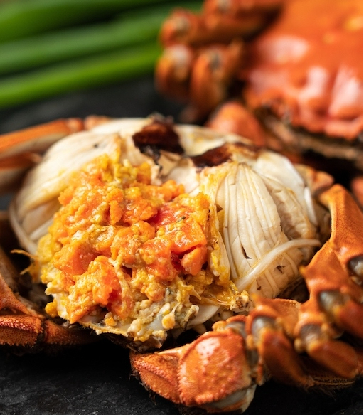Light, fluffy, and slightly sweet to the palate, tamagoyaki is a versatile egg dish that can be enjoyed any time of the day. In most sushi-yas, the serving of tamagoyaki marks the end of the meal; however, the custard-like egg is also a common sight in Japanese breakfasts and in bento boxes.

With the direct translation of tamagoyaki being “fried egg”, the iconic Japanese rolled omelette also comes in various iterations, depending on the texture and the amount of seasonings used. Atsuyaki tamago, for example, is a straightforward combination of eggs, soy sauce, and sugar. It is grilled or fried, resulting in a denser egg that’s firmer in texture. On the other hand, dashiyaki tamago is much softer due to the addition of dashi to the egg mixture.
Serving tamagoyaki at a MICHELIN-starred restaurant is also a special feat as it requires certain secrets and techniques in order to create an elevated tamagoyaki experience to round off the omakase. Today, chefs Kazumine Nishida of two-MICHELIN-Starred Shoukouwa and Tomoo Kimura of one-MICHELIN-Starred Sushi Kimura share their restaurant secrets when it comes to creating the humble Japanese egg dish.

The Tradition of Tamagoyaki
According to Nishida, sushi began as a form of fast food in Tokyo in the 1600s, when the city was known as "Edo". “At that time, sushi was sold casually at food stalls, and meals consisted of only fish, rice, and the vinegar sauce used to flavour and preserve the sushi,” he explains. “Back then, the sushi available was nothing like the ones served at Shoukouwa. Tamagoyaki was introduced to sushi menus in more recent times to provide diversity and balance for the palate.”
Kimura also shares that white sugar was a premium and rare ingredient in the Edo period. “Traditionally, tamagoyaki is served at the end of the meal; it is actually a dessert,” he says. “Tamagoyaki is a good test whether a chef is skilful or knowledgeable. It is the theme of the chef.”

Tamagoyaki in Its Purest Form
“In its simplest form, tamagoyaki is a recipe for egg with another ingredient,” says Kimura. According to him, he follows two ways of preparing the custard-like egg dish. “One is with dashi and egg, quickly grilled. The other way I like to prepare it is with sticky yam, eggs, and either a fish, shrimp, or scallop. This version is prepared without dashi and is slow-cooked instead of quickly grilled.”
Nishida, on the other hand, shares that the concept of making tamagoyaki involves the layering of several ingredients that are baked in a square pan. “The ingredients are blended together, and great care must be taken to make a perfect batch; otherwise, the whole process must be repeated,” he says. “This dish must be prepared fresh each day that the restaurant is open.”
The Perfect Tamagoyaki
Nishida shares that he uses eggs, shrimp, yam, sugar, and salt in Shoukouwa’s tamagoyaki. The premium eggs and shrimp for the restaurant’s tamagoyaki are sourced from Japan and flown in several times a week. “To me, it’s all about getting the measurements and proportions right. It’s absolutely critical,” he emphasises. “For example, the amount of yam used affects how long it takes for the egg to bind with the other ingredients. Only through constant practice and perfecting the technique would it be possible to make a perfect batch that has the right taste, colour, bouncy texture, and shape that is suitable to serve to our guests.”

“Tamagoyaki may seem simple, but is very interesting,” says Kimura. When different chefs make tamagoyaki, even with the same recipe, the result is different.” Kimura says that master chefs purposefully never share their secrets, despite the foundational recipe for tamagoyaki being the same.
“There must be a deep understanding of how tamagoyaki is made,” says Kimura. For him, moisture, heat, and temperature used in cooking, as well as the room’s temperature, are vital when making tamagoyaki. “The mixing procedure affects the air pockets of the tamagoyaki, so it’s also essential to understand,” he continues.
“It is also important to understand what a chicken egg is, in its full essence. Knowing what temperature the egg becomes solid given your environmental conditions, as well as the difference in solidification of the yolk and white, are important. Understanding the changes in texture when liquid and sugar are added…these are very important to know.”

“It’s important to highlight that the most important essence of the craft is not included in the recipe. It is usually not shared with junior and apprentice chefs because if a master teaches everything, the junior and apprentice chefs will stop thinking of how to polish their own skill, which is the most important lesson for a chef. This is what makes up the essence of the recipe.” he says.





















